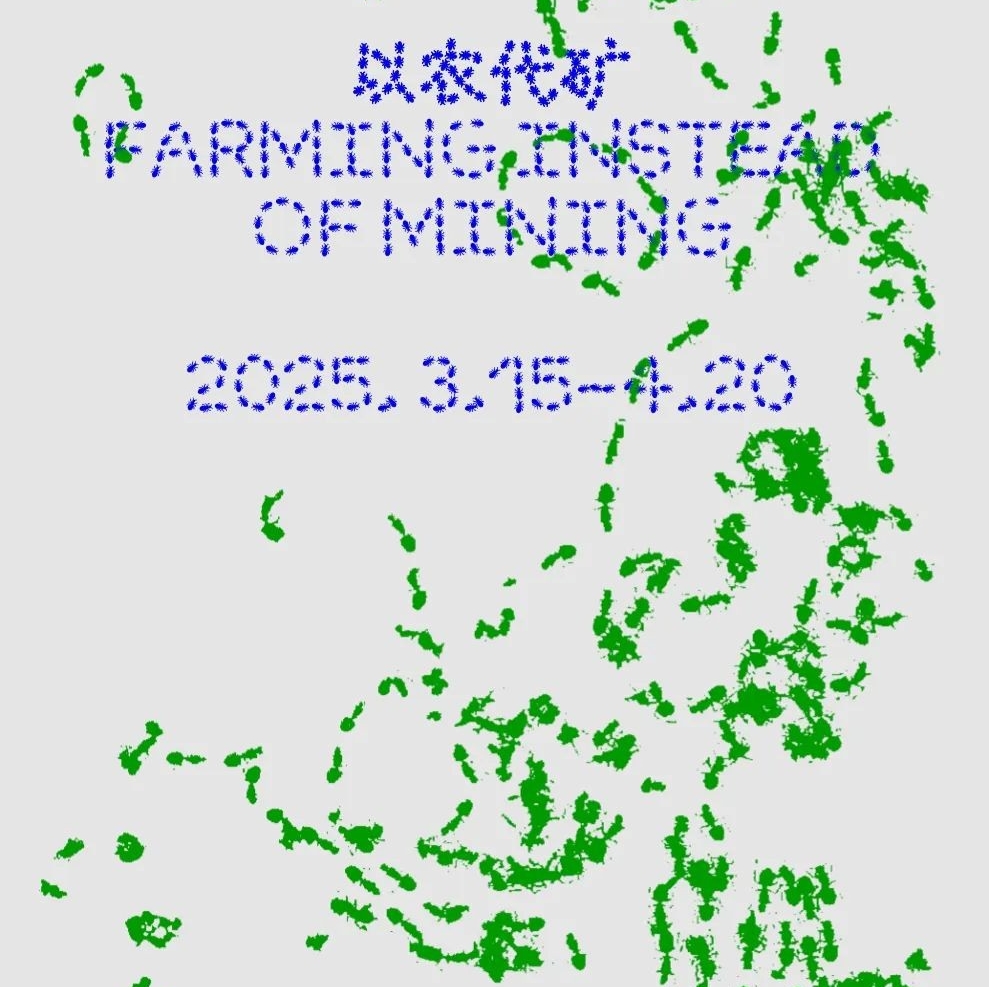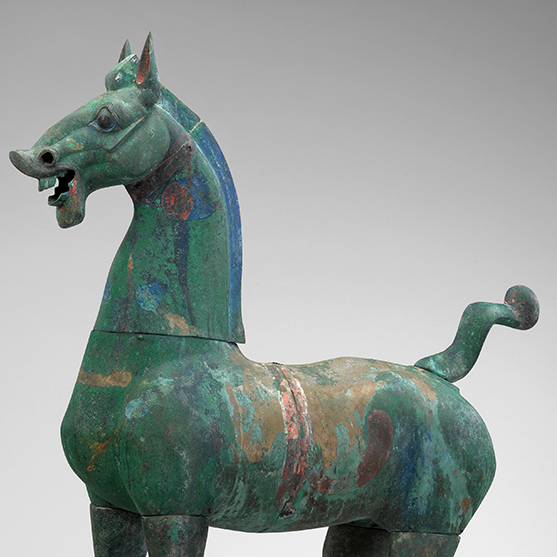 View of the Opening for “Consciousness Emergence”
View of the Opening for “Consciousness Emergence”
Emergence is one of the key concepts in complex systems theory, and as a phenomenological term, it is used to describe the phenomenon that simple individuals produce complicated overall behaviors through partial interactions. Since 2022, the inaugural year of generative artificial intelligence, a large number of AI software applications have surged forth since then, which has not only influenced and changed some of the behavior patterns of human beings, but also triggered profound discussions...As described in the emergence theory, the partial interaction and accumulation of individual data eventually form the complex behaviors and functions of the overall intelligence, and the individual elements in turn generate the overall complex behaviors and phenomena, thus presenting an intelligent performance similar to “consciousness.” So could AI also possess a similar form of consciousness? Or will the evolution of AI redefine “consciousness” itself?
On 25 August, 2024, the group exhibition themed on “Consciousness Emergence” was unveiled at Shenlan AI Space in 798 Art Zone, Beijing. It is an art exhibition jointly presented by the “AI Art Research Group”around the above discussion. In October 2023, the “AI Art Research Group” was prepared and launched by Chen Tianchan, an AI researcher at the Schwarzman College of Computering at MIT and an AI art researcher at the Electronic Arts department at Alfred University in United States, with members including Chris Golub, Chen Tianchan, Huang Enqi, Shen Cai, and Yang Yanchuan.
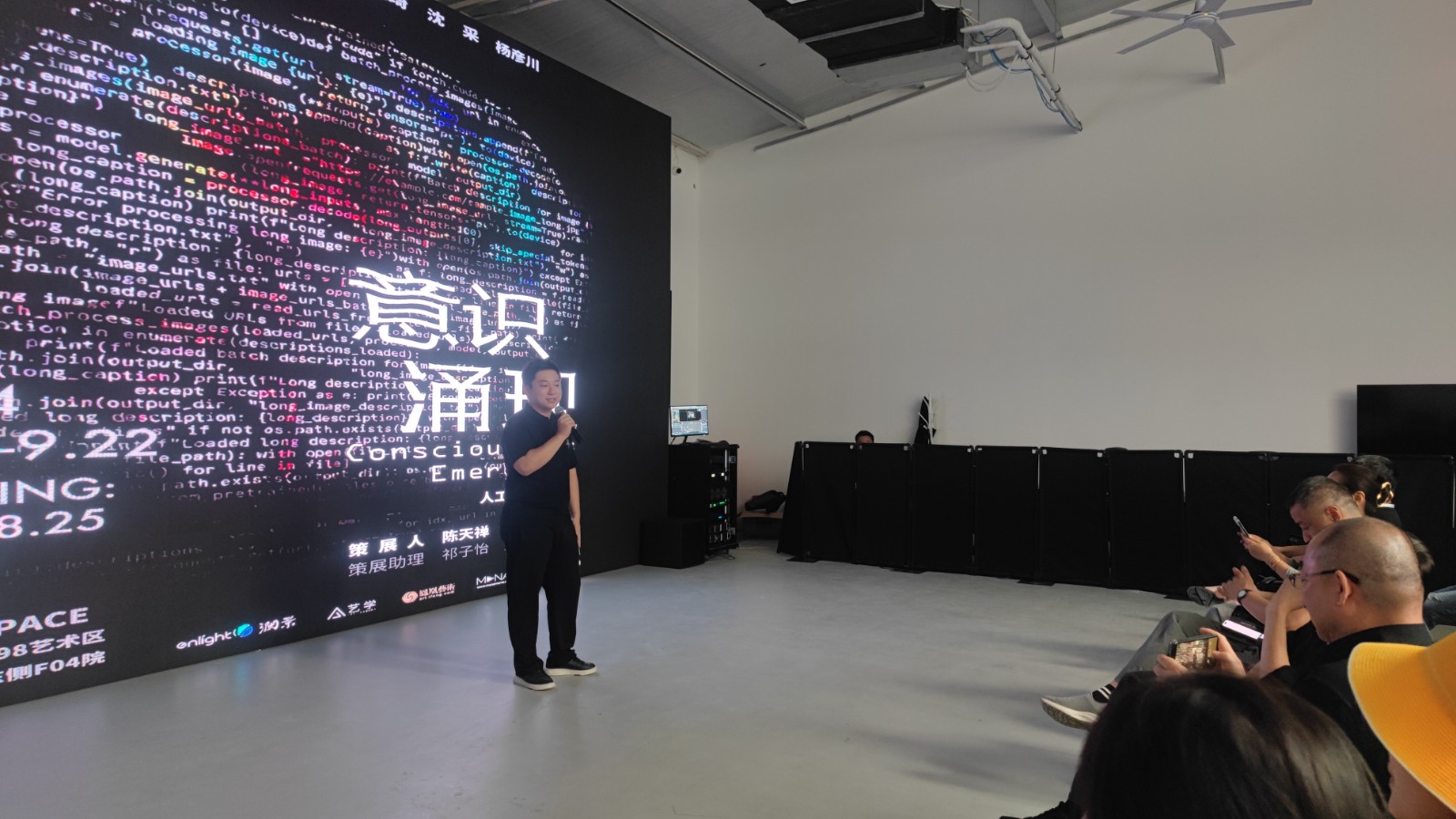 Chen Tianchan, curator of “Consciousness Emergence”addressed to the opening ceremony
Chen Tianchan, curator of “Consciousness Emergence”addressed to the opening ceremony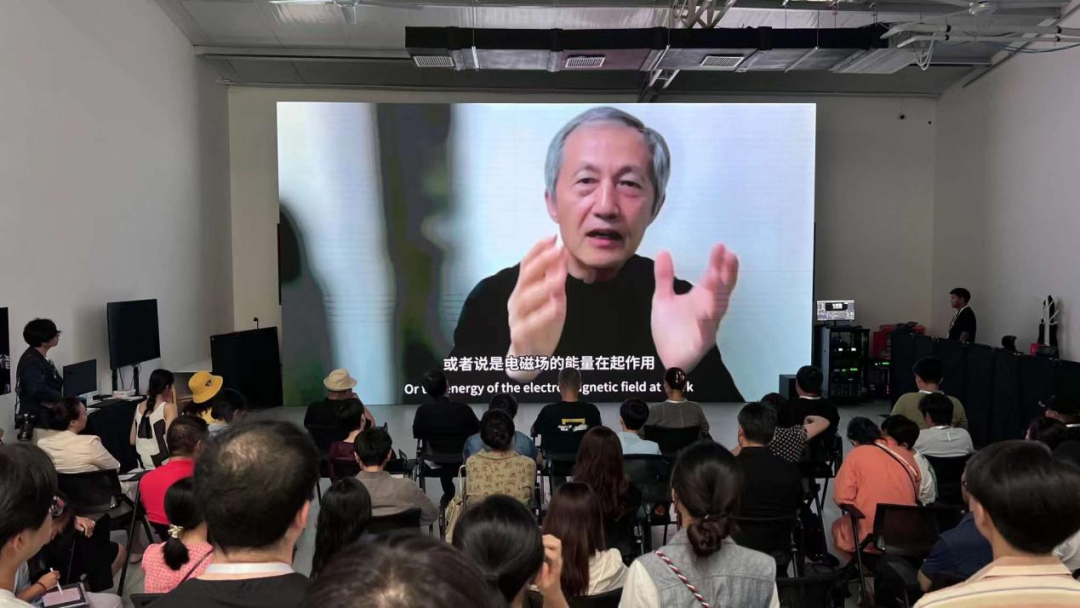 Chen Xiaowen, a tenured professor of Alfred University in United States, delivered a speech at the opening.
Chen Xiaowen, a tenured professor of Alfred University in United States, delivered a speech at the opening.
Focusing on the research and discussion of group, this exhibition focuses on eight new works by five artists, including interactive video installations, digital prints, and various forms of installations. By showcasing the wonderful inspirations when combining AI and artistic creation, their different interests and media applications of each artist, “Consciousness Emergence” contains the infinite potential and frontier of AI in the art field. Chen Xiaowen, a tenured professor of Alfred University in United States, Professor Tang Keyang, chief researcher of the Future Lab at Tsinghua University, and Li Lin, General Manager of Lanjing Technology Company, respectively delivered speeches at the opening ceremony. They affirmed the current discussion and creations by AI art research group, and they were also looking forward to new artistic expressions and experiments that will be conducted by these young artists.
Interactions between AI Generation and Traditions
Generative artificial intelligence is an artificial intelligence technology that regenerates text, pictures, sounds, videos, and other content based on algorithms, models, and rules, which can not only process the input data, but it can also learn and simulate the internal laws of things and create something new. Since 2023, generative artificial intelligence which can be represented by ChatGPT, has not only become a technological hot spot that affects human life and production, but it also inspired new perspectives and ways in the reactions with traditional creative methods.
 Shen Cai, a faculty member of Art and Sci-Tech Speciality at CAFA, talked about her creation.
Shen Cai, a faculty member of Art and Sci-Tech Speciality at CAFA, talked about her creation.
“Heraclitus” is an innovative experiment by Shen Cai, a faculty member of Art and Sci-Tech Speciality, School of Design at the Central Academy of Fine Arts. She combines modern technology with traditional art, creating a unique artistic expression through both direct observation and AI generation. The flame symbolizes the foundation of human civilization and the driving force behind artificial intelligence, echoing Heraclitus’ philosophical idea that everything flows and impermanence is eternal.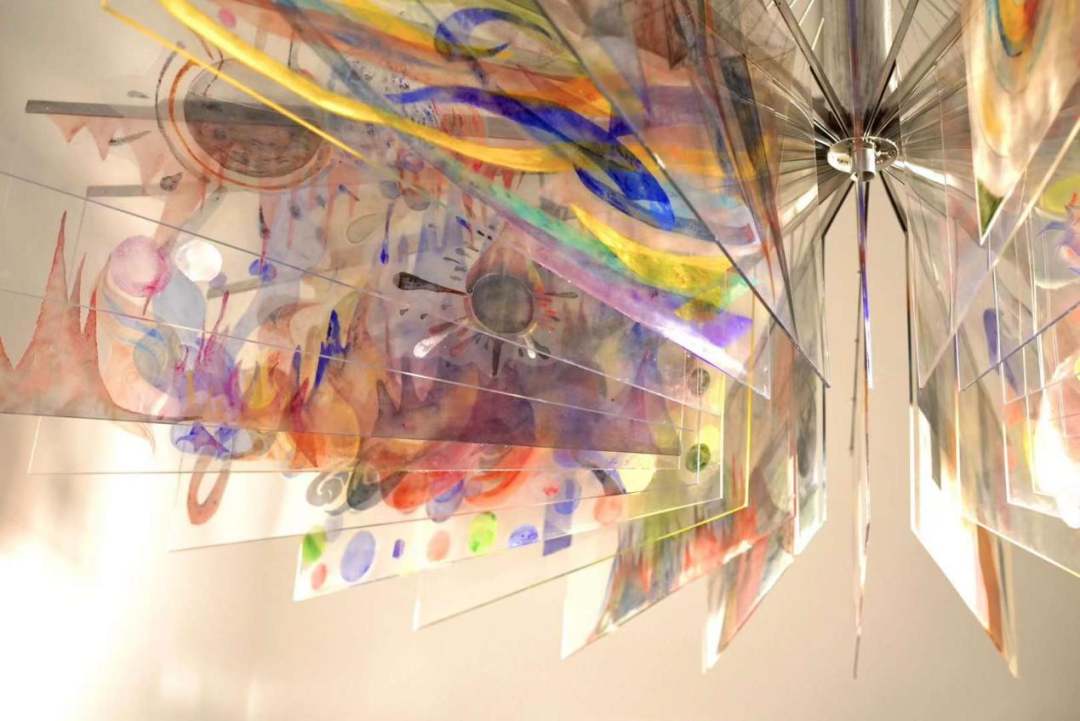
Shen Cai, Heraclitus, 2024
Self-developed generative AI, Single piece 120 x 60 cm
The work integrates the essence of traditional art and AI technology, resulting in a complex and multilayered creative process. The flame not only symbolizes a source of energy in the physical world but also represents the dynamic relationship between humans and AI, hinting at the uncertainty and variability in artistic creation. The constant change of the flame reflects the interaction and collision between the artist and AI in the creative process. Through the symbolic element of the flame, the work explores the complex relationships between energy and technology, tradition and modernity, and subjectivity and objectivity. It also reflects on the ethics of technology and redefines the meaning of “direct observation” in contemporary art, showcasing the infinite possibilities of integrating modern technology with traditional art.
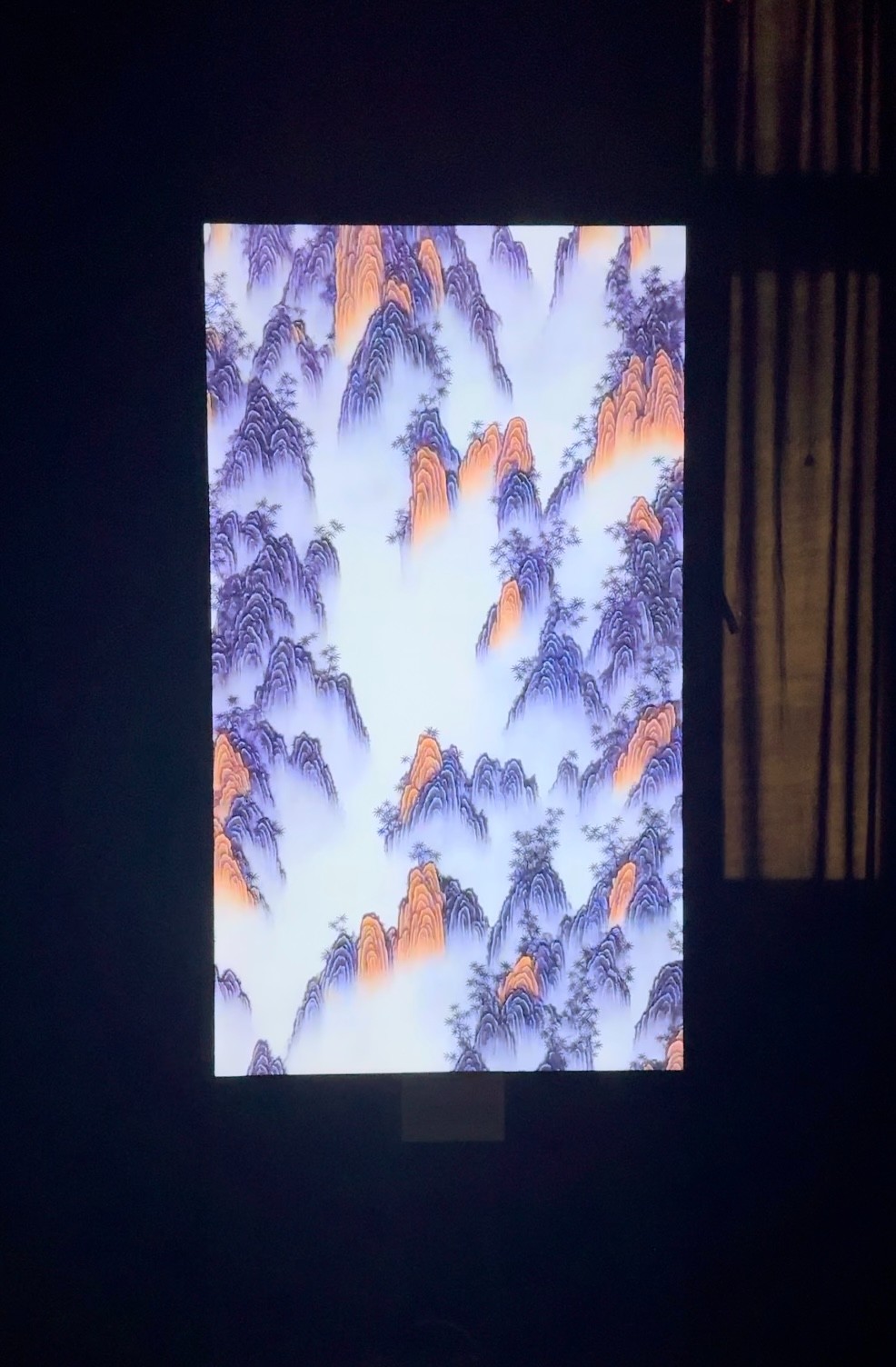
Chen Tianchan, Infinitus, 2023
Stable Diffusion, Variable, 5 minutes 44 seconds
Chen Tianchan, curator of this exhibition, is also the initiator and core member of the “AI Art Research Group.” His “Infinitus” is a generative AI video work that primarily features a blend of Chinese landscape painting and contemporary art creation. Using AI technology, the artist enables the work to continuously zoom and iterate, interpreting this abstract concept and fantasy as if mountains contain more mountains, and scenes contain more scenes, creating layers upon layers that never exhaust.
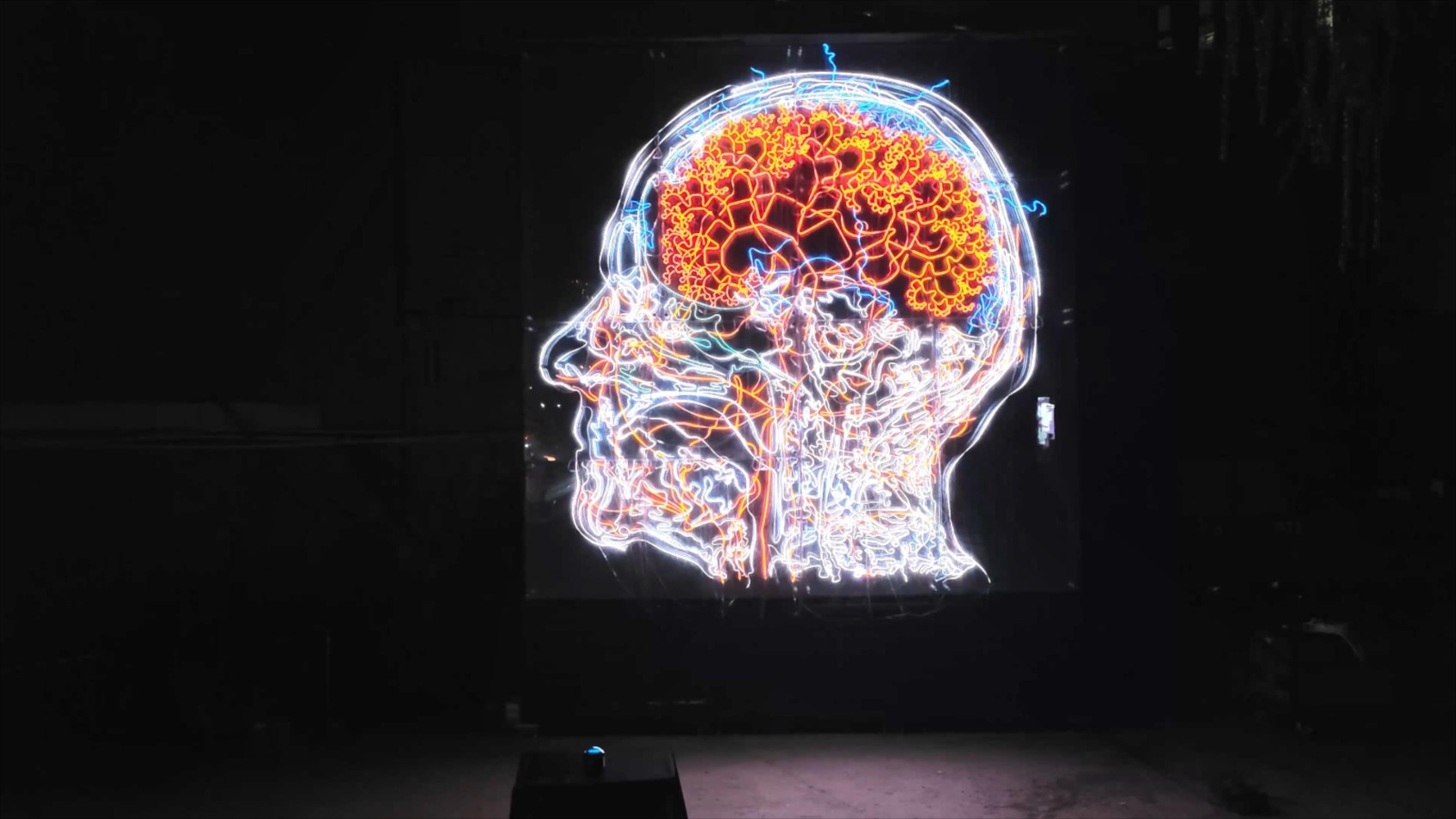
Chen Tianchan, The Prophet, 2024
LED, acrylic, metal, biosensors, self-developed artificial intelligence, 4x4 m
“The Prophet”, an outdoor installation made its debut at Shenlan AI Space. Chen Tianchan uses biosensors to capture the audience’s biological signals (body temperature, heartbeat, grip strength) and transforms these into psychological portraits through an AI program, which are then mapped onto dynamic lighting. The artist skillfully embeds the geometric wonders of the Pythagorean tree into the mysterious structure of the human brain, resembling a vibrant rainbow blooming on the dark window of wisdom. Through highly refined AI algorithms and dynamic lighting expressions, it depicts the subtle resonance between human mind and the real world. It embodies the relentless pursuit of life, existence, and wisdom, akin to an eternal poem, a continually unfolding beautiful dream, and a profound chapter of human thought, gradually revealing the infinite mysteries of the universe and the profound brilliance of human intelligence.
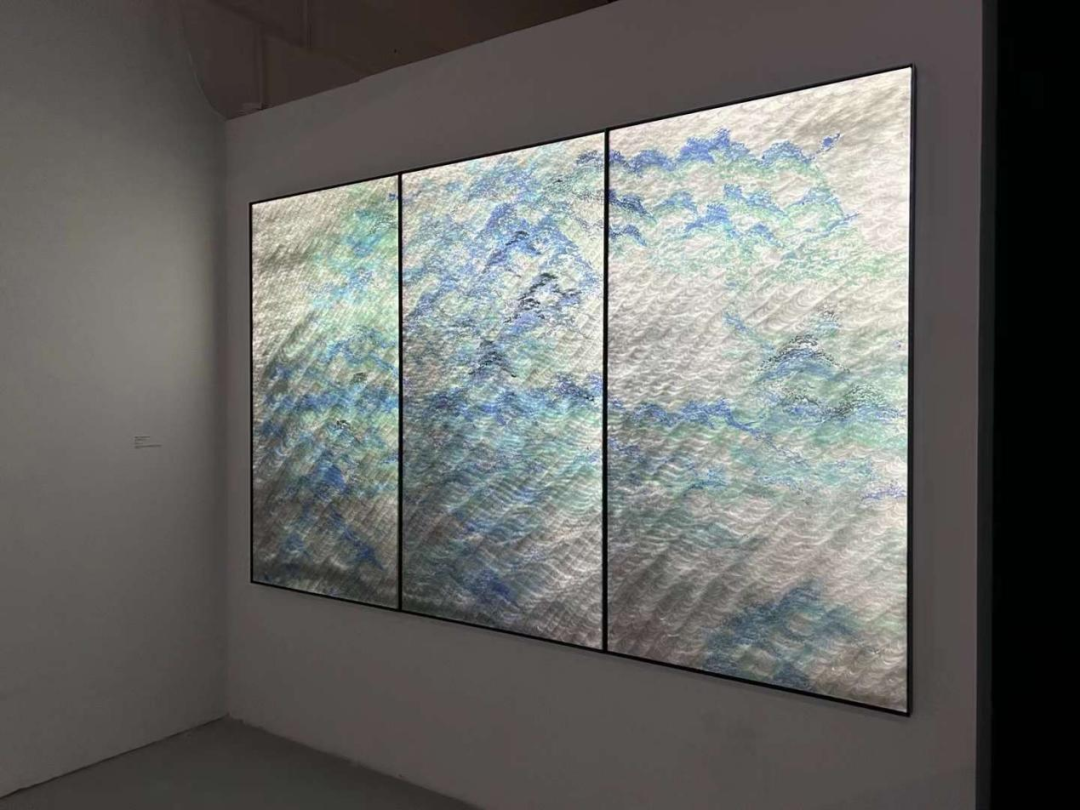
Yang Yanchuan, AI Landscape 2024-3, 2024
Woodblock printing, ink wash, gold powder, 180x290 cm
The deconstruction and reconstruction of traditions through AI generation technology is also one of the main means of AI art creations. PhD. Yang Yanchuan who graduated from the Central Academy of Fine Arts and currently teaches at Beijing City University, uses AI to generate images of green mountains, which are then printed using woodblock printing techniques onto green rippling waters painted by the artist on rice paper. This may be a dialogue between science and art, blending the ancient and the modern, hence the title “AI Landscape 2024-3.”
Another work by Yang Yanchuan is “Symbiosis-Miao” about the symbiosis between humans and artificial intelligence, focusing on the expression of water. Humans have different memories and feelings about water, and the artist believes that the earliest human memory of water comes from the fetal period. Thus, the artist aims to create an immersive space surrounded by water. The exhibition space features AI-generated images on the walls, with a real water surface 3-5 cm deep on the ground, allowing the audience to immerse themselves in a water-enclosed environment, evoking the sense of security and vitality associated with being surrounded by water in the fetal stage.
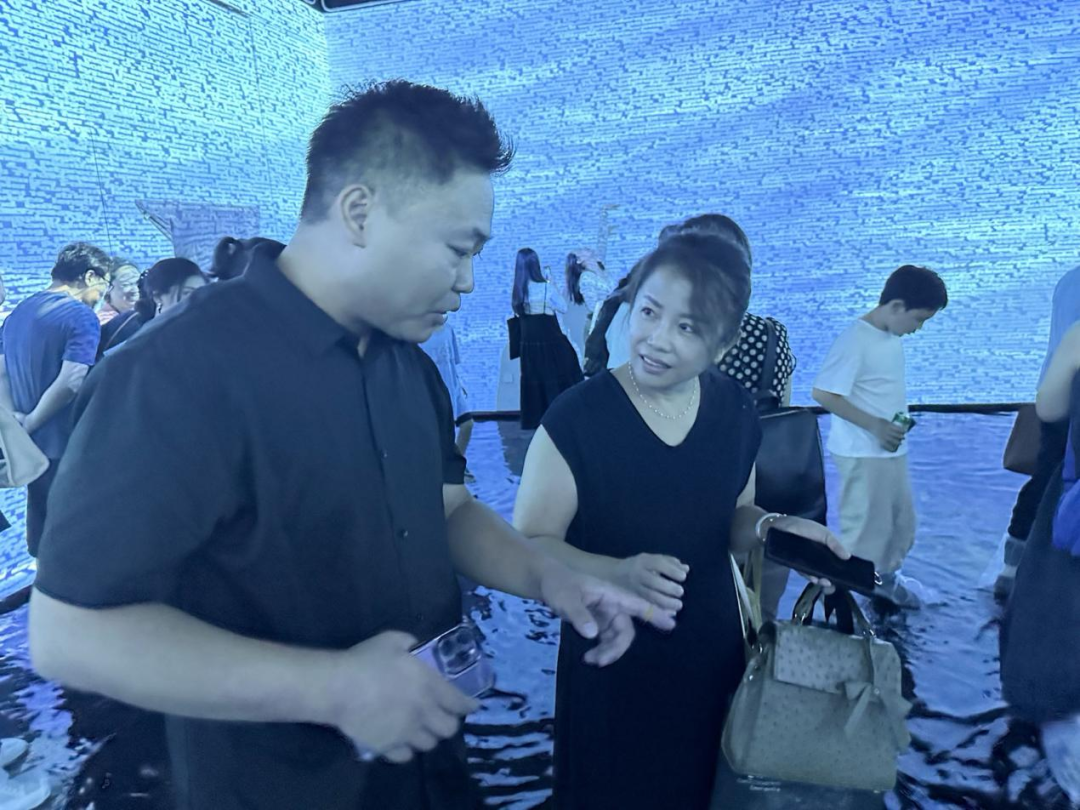 PhD. Yang Yanchuan who graduated from the Central Academy of Fine Arts and currently teaches at Beijing City University, explained his working way.
PhD. Yang Yanchuan who graduated from the Central Academy of Fine Arts and currently teaches at Beijing City University, explained his working way. Yang Yanchuan, Symbiosis - Miao, 2024Brush, ink, xuan paper, Stable Diffusion-generated images, Dimension Variable
Yang Yanchuan, Symbiosis - Miao, 2024Brush, ink, xuan paper, Stable Diffusion-generated images, Dimension Variable
From a technical perspective, the work first involves the artist using ink to draw water ripples on rice paper. These hand-drawn ripples are then fed into Stable Diffusion (SD), which, after continuous learning and training, generates a localized model. SD then creates dynamic water ripple images based on the artist’s intentions. The process of drawing water ripples on rice paper can be seen as “manual.” Feeding the ripples into SD for training and its autonomous learning process can be seen as “intelligence.” The phase in which AI is trained and learning is referred to by Yang Yanchuan as the “second brain” of the artist, while the content generation based on the artist’s prompts can be understood as the "third hand" of the artist. The title “Symbiosis” reflects the attitude and response to the challenges faced by both human and AI-generated art.
“Punctum” in AI-generated Imagery
Roland Barthes, a French literary theorist, philosopher and critic put forward the two important concepts of “Studium” and “Punctum” in his Camera Lucida: here “Studium” is an intuitive layout of the image, and “Punctum” can be a detail in the image, or a set of partial perspectives, and its metaphorical power can drive the viewer’s sense of commonality, and promote its connotation and significance to expand and generate new meanings.
In the evolution of generation from images to videos, how has the “Punctum” changed in the current AI art environment? Chris Golub, an installation artist and filmmaker based in New York, explains his philosophical thinking in his work “After Noon”. Being a current Master of Fine Arts graduate student and a State Fellow at the New York State College of Ceramics at Alfred University, Chris Golub’s primary interest lies in exploring how art’s ambiguity and lack of clarity can create meaning, and in examining the dual existence of surfaces as both depth and a site of action. He creates a 3D-generated artist model walking across satellite map locations in Arizona and Texas, USA, and Siena, Italy. This footage is projected onto a semi-transparent, semi-reflective film. The light is both contained within the film and also penetrates through it, reflecting off its surface. This is a modern iteration of Sergio Leone and Ennio Morricone’s “Wild West” in the age of digitalism and failed escapism. AI software generates rasterized visual backgrounds of Monument Valley, Van Horn, and the Acona Desert using stitched-together satellite images, while creating audio stripped of all dynamic structures from Ennio Morricone’s original soundtrack. Like cowboys, both the model and digital nomads reject fixed positioning and a stable self-perception, emphasizing their individuality not through positivist existence but through their existence as void, embodying what their audience lacks.
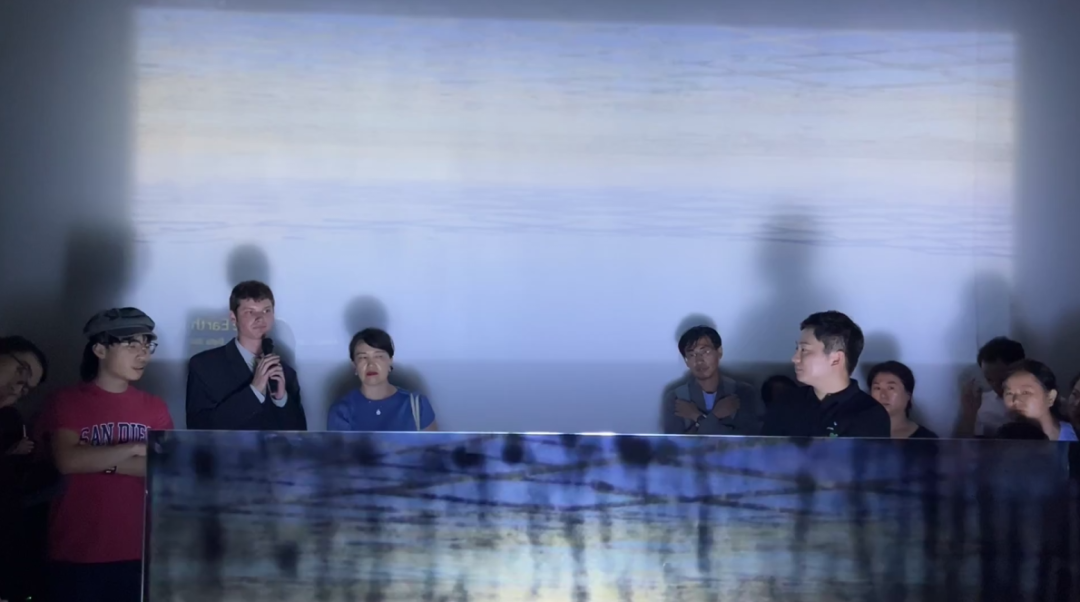 Chris Golub, an installation artist and filmmaker based in New York, explains his philosophical thinking in his work After Noon.
Chris Golub, an installation artist and filmmaker based in New York, explains his philosophical thinking in his work After Noon.
Chris Golub, After Noon, 2024
Dye-sublimation canvas, acrylic, wood, video, sound, 5m x 2.5m x 4m
In “Petting Zoo”, multiple 2.5D sculptures are arranged within a wooden enclosure. The artist used an AI program to generate 300 sentences, each with a metonymic relationship to the previous one, and then used another software to generate a video based on these sentences, set in a 3D-generated theatrical stage. Additionally, algorithms were programmed to generate random movement paths for objects like a red herring, a can of sardines, and several toy ducks, causing them to float laterally within the enclosure, with these paths potentially extending infinitely. As we immerse ourselves in AI, we are quickly struck by the artificiality of our own intelligence: at the deepest level of our perception, everything we do is not man-made; rather, everything is interconnected through external factors.
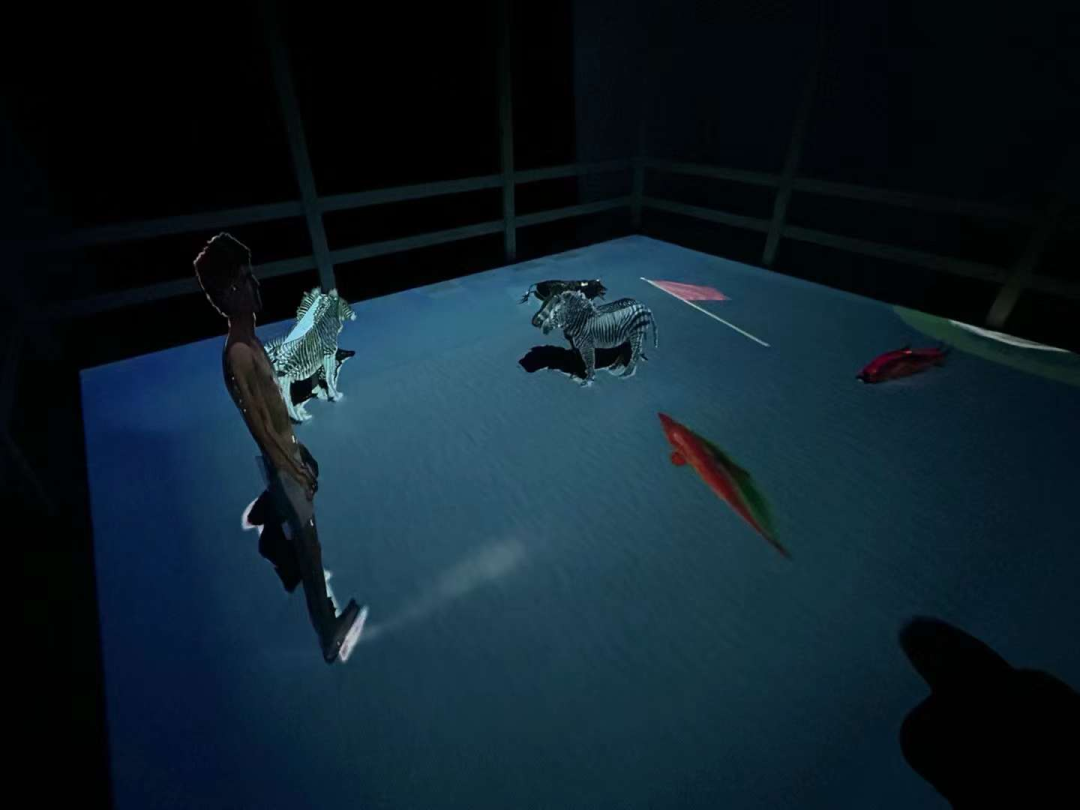
Chris Golub, Petting Zoo, 2024
Fiberboard, wood, video, sound, 5m x 5m x 2.5m
In response to Chris Golub’s creation integrating with his own cultural background, Huang Enqi’s “Fairy Tale Event” reflects a vague memory from his high school days in a three-channel AI-generated video work. Huang Enqi is a PhD candidate at the Central Academy of Fine Arts, specializing in AI and digital imaging. His works encompass interactive video, interactive installations, bio-art installations, and AI-driven imagery. Fairy tales often begin as metaphors for violence, gently embedding cruelty into human consciousness. Using the “balloon people,”the first fairy tale characters created by AI, the artist adapts this memory into a fairy tale story. Three synchronized timelines combine to form a complete event in his work: the red balloon head character, frustrated from a breakup, plans to set fire and cause harm at school; the blue balloon head character locks the No. 1 Teaching Building ahead of time to skip evening classes and prevent teachers from checking; a series of factors cause the yellow balloon head to narrowly miss the fire. By presenting a multi-threaded, “surveillance-style” objective perspective, the video is filled with distorted faces, unreal actions, and dreamlike dialogues. Just as the artist constantly recalls and attempts to reassemble fragmented memories, viewers are encouraged to gradually clarify the details and logic of the event through repeated viewing and they may gain synaesthesia through the “Punctum”.
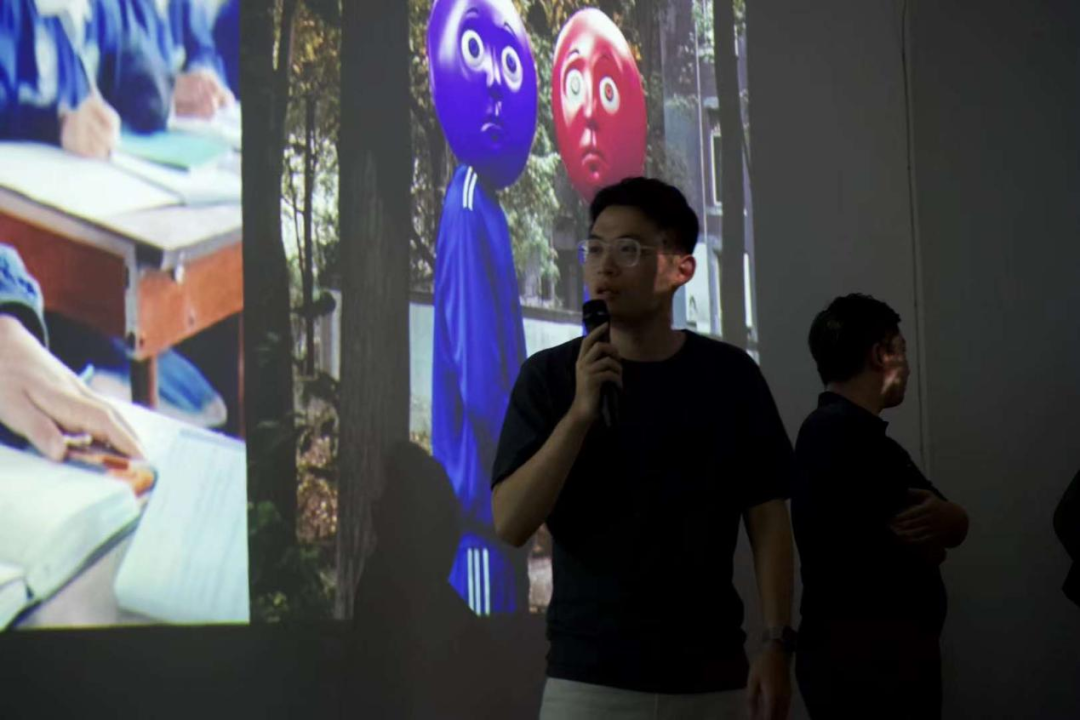 Huang Enqi, a PhD candidate at the Central Academy of Fine Arts, specializing in AI and digital imaging, introduced his work.
Huang Enqi, a PhD candidate at the Central Academy of Fine Arts, specializing in AI and digital imaging, introduced his work. 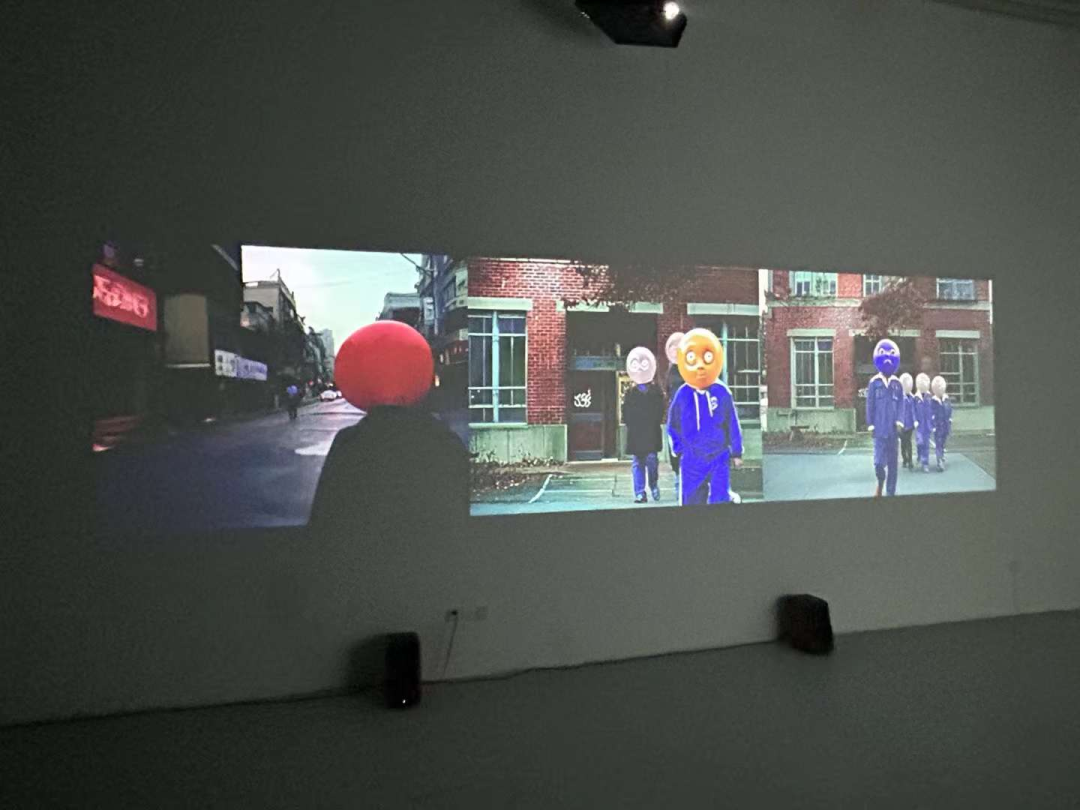
Huang Enqi, Fairy Tale Event, 2024
AI-generated images, Dimension Variable
This concentrated display by the AI Art Research Group does not only provide a discussion and application of the latest AI technology, but it also provides a platform for further discussion on more possibilities of art creations. While encouraging viewers to experience the potential of artificial intelligence as an innovative tool and medium of expression, the exhibition aims to deepen viewers’ understanding of the nature and creative process of art through diversified forms.
Text edtied by CAFA ART INFO
Image courtesy of the organizer.
About the Exhibition

Artistic Director: Chen Xiaowen
Art Consultant: Joseph Scheer
Producer: Li Lin
Curator: Chen Tianchan
Curatorial Assistants: Qi Ziyi and Wei Tianle
Artists: Chris Golub, Chen Tianchan, Huang Enqi, Shen Cai, and Yang Yanchuan.
Duration: 2024.8.25 — 2024.9.26
Venue: Shenlan AI Space
Address: F04 Courtyard on the east side of the South Gate Parking Lot, 798 Art Zone, Chaoyang District Beijing


